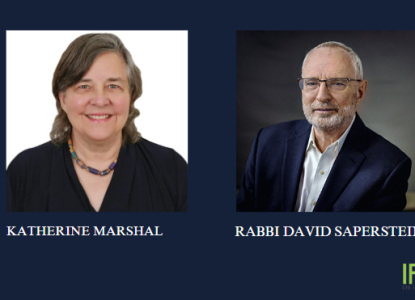By Rabbi David Saperstein and Katherine Marshall
– – –
An exchange between Rabbi David Saperstein and Katherine Marshall at the Interfaith (IF) G-20 gathering in Manaus, Brazil, June, 2024
As part of a series of workshops in Manaus, Brazil in June, 2024, preparing for the G20 Interfaith Forum, Rabbi David Saperstein reflected on the compelling reasons why religious institutions and actors have vital roles to play in addressing challenges facing environmental protection and the changing climate. He elaborates on the basic rationale in this exchange with Katherine Marshall.
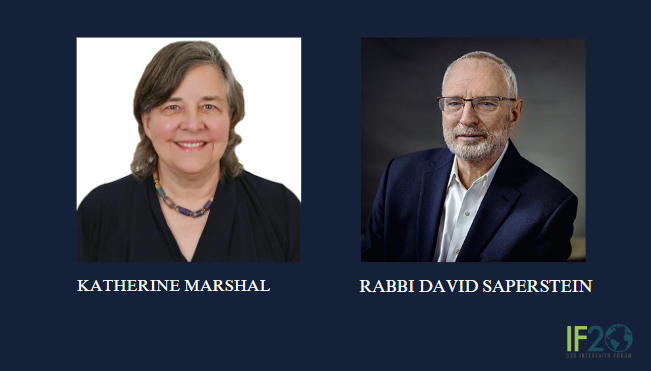
Introduction by Katherine Marshall
David Saperstein is recognized as one of the most influential religious leaders in the United States and beyond. He wears many hats, but among them are as a key leader for about 40 years of the largest Jewish organization in the United States and service as the Ambassador for Religious Freedom in the Obama administration. He has a decades long history of focusing on the issues of climate change and protection of the environment, including with the Interfaith Coalition on Energy, one of the very first efforts of its kind, and the National Religious Partnership on the Environment. Among other issues, he currently chairs a federal advisory committee on human trafficking; and he chairs the board of the NGO that that I lead (WFDD). Thus David is a person who sits at the real intersections between public policy and public understanding and action, and the roles that the public, including religious actors. can play.
Let me start by asking David: after all the decades that you’ve worked on these issues in many different organizations in the United States and internationally, what do you see as the “value added,” to use a technical term, that the religious dimensions in all their complexity bring to the challenges that we’re talking about here in Manaus? What difference can religion make and how do you think about its role conceptually?
Rabbi David Saperstein’s Response
I don’t have to convince anyone who’s in this room what an extraordinary crisis we face, but imagine if the entire world could have witnessed the deeply spiritual messages about the roles that their physical environment plays in their religious, spiritual lives that were presented to this meeting by Brazilian Indigenous leaders, as they told us about their communities’ needs to protect the environment. How could anyone question the potential value added of religion as we face the environment crisis?
Scientific experts were already pessimistic a decade ago, but now see things spinning out of control much faster than even their most dire predictions. The extraordinary panel of experts that advises the UN is warning us that if we don’t act now far more assertively than we have we face an existential crisis. I give credit to the United Nations Secretary General who has said, absolutely clearly, over and over again, that this is not fiction or an exaggeration. “Science tells us,” he says, “that our current energy policies are a pathway to global warming more than double the targets set at Paris. It’s now or never,” he warns. “Waves of terrifying storms, widespread water shortages, floods, extinction of a million species of plants and animals: we must act now.” To do so requires changing people and the way people live, for example as Pope Francis admonishes, to get away from a consumer mentality of life. Change requires changing institutions: economic institutions, cultural institutions, and educational institutions changing their practices and their roles in alerting and mobilizing the public. And the needed change requires changing government policy.
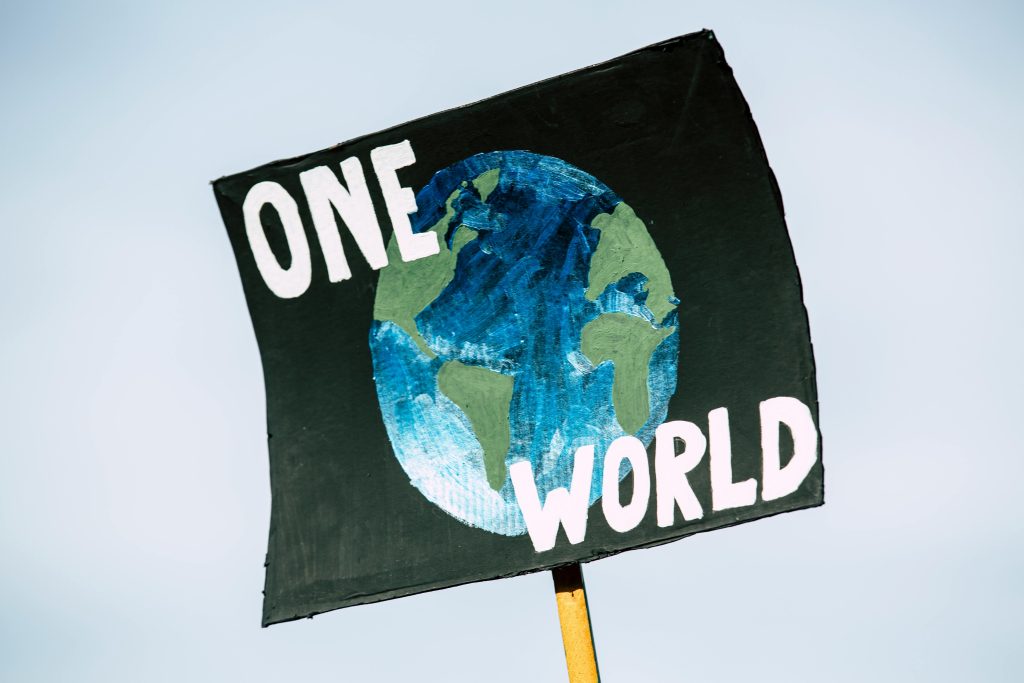
When it comes to changing people, the power of the religious community is significant. Think about this paradox: for people who identify as religious or identify with some faith entity in their lives– 80% of the world’s population, according to the surveys– religion is both the most local way (beyond their families) that they organize their lives, in houses of worship and religious communities across the globe; and the most global way they organize their lives is as part of faith traditions that cross boundaries and bring together global communities. What enormous potential religion has! Think about it pragmatically for a moment. Put aside all of the policies, all of the data. In the United States, there are more houses of worship than any other public buildings. Add up all our schools, the police stations, the libraries, the hospitals, and in total they don’t measure up to 340,000 houses of worship in the U.S.; most likely 6 to 10 million houses of worship across the globe. Add to that their religious schools, and hospitals, and community centers. Now imagine if every single one of them took on a serious energy conservation mentality, using wherever they could renewable energy; recycling and purchasing recycled goods; conserving energy in the wide variety of religious buildings and integrating responsible energy technologies and practices into their construction plans and the way they administer their buildings. And if they mobilize their billions of worshippers and members to actually be a powerful political force for what the leadership of our faith traditions are increasingly calling for, the impact would be enormous.
Jewish Tradition and Environmental Stewardship
Each of our faith traditions has distinctive perspectives and contributions. Let me speak for a moment about the Jewish tradition that is probably less known to many of you than most of the other major world faith traditions. From the Book of Psalms, we all know the line “The earth is the Lord’s and the fullness thereof, the world and those who dwell therein.” In Judaism, that was understood to say that God has created all of the world and entrusted it to us, to our care. It is a trust, and the terms of any trust is, first of all, to protect and preserve the corpus of the trust and, second, to use it as the trust instructs us to use it. In my tradition, that means protecting God’s creation entrusted to our care and sharing God’s wealth with those of God’s children who are poorer and more vulnerable, who need our help. In the Jewish tradition, there’s no word for “charity;” it’s not a question of caritas or philanthropos of love of our fellow person. It is tzedakah , righteousness. It is a commandment — that you must share God’s growth with those less fortunate. That kind of thinking led, 2,000 years ago, when Jesus of Nazareth walked on earth, to the Talmud’s creation of a system of governmental rules and regulations in the Jewish community that protected the water, that protected the air, that addressed pollution, that called for non-wasting of resources. From the lines in Deuteronomy that say “bal taschit, do not waste”, prohibiting even in war time, that you can’t destroy fruit bearing trees, that you’ve got to fight war in a way that allows normal life to renew itself afterwards). Generations of rabbis concluded this means that you didn’t waste anything frivolously; you had to care about protecting our resources.
Maimonides, the greatest of Jewish medieval scholars, said we have to use everything entrusted to us in moderation. It can’t be excessive, as that’s not being responsible to what God has called us to do. Think about the sabbatical year. You had to let the land rest and renew itself at least every seven years. You cancelled all debts every seven years, gave people a chance to renew themselves and to start again. In the Jubilee year, the commandment is that land has to go back to the original owners, something that speaks across the millennia to us today as we seek feasible ways of addressing the needs and the rights of indigenous communities.
Interfaith Perspectives on Environmental Protection
These are some of our particular Jewish laws. But if you look across traditions, for example, at the teachings of Pope Francis and Laudato Si’, you can see the powerful focus on protecting the environment in a broad range of religious groups. A number of Muslim scholars recently issued a major statement called Al-Mizan, which refers to the imbalance in how we use God’s resources. There are counterparts in the Buddhist and Hindu world. And, as I have already noted, the contribution of indigenous communities, is so rich in moral and practical insights in terms of our relationship with the natural world. More and more leaders are speaking out with powerful moral visions that can help transform the debate. We must face the question of why have we failed to do better than we have — but the potential impact is enormous. We are all responsible for inspiring hope that the potential of the religious communities will be fulfilled.
If I asked each of you to think of something that you have been involved in, where you have seen the religious community do something to address some environmental problem successfully, many would raise your hands. We can take hope in the breadth of those actions. When religious communities have weighed in on the renewal of endangered species through legislation in the United States and in countries like Indonesia and elsewhere, it really made a difference, in part because that’s such an intuitively religious issue. You are protecting creation in a literal, very defined sense.
Environmental Justice and Religious Advocacy
The poorest countries of the world, the ones that did the least to create this problem, are those suffering the most from the impact of environmental change in the short run, although it will affect all of us in the long run. They are the least equipped to adapt to new technologies, the least equipped to mitigate the impact. One reasons that the COP process has increasingly made this an issue is the role of the religious voices pushing for environmental justice.
Let me tell you a story linked to sustainable development. U.S. religious communities have played critical roles pushing the United States Congress to ensure that environmental justice be part of any solution. When the first major bill in the United States was introduced to address climate change, it did not have a single line about concern about the poor. Religious communities set out to convince Rep. Henry Waxman on the House of Representatives side (who understood immediately) and then met with Sen. John Warner, the committee chair on the Senate side. The meeting was supposed to be 10 minutes, but the senator got so engaged about the theological considerations that the religious values and viewpoints we were sharing implied that he remained for an hour and concluded that it is our responsibility to ensure that the most vulnerable of God’s children are cared for as we address the crisis.
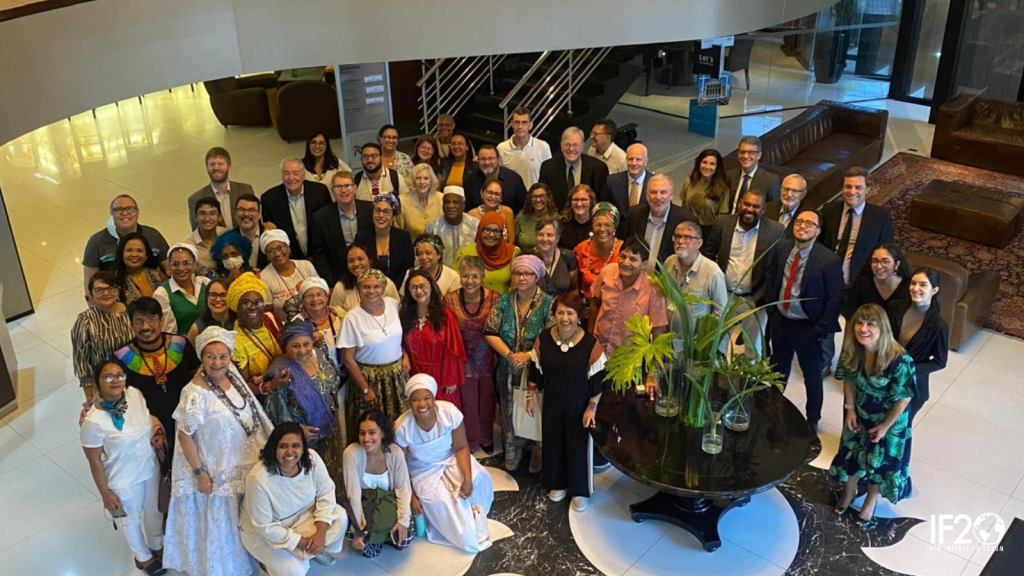
Then, let me take two examples documented in depth recently during a seminar at Georgetown University. In Indonesia, on islands like Sumatra there are terrible practices of “slash and burn” in forests that accelerate their destruction. The government says it shouldn’t be allowed, but does not enforce it consistently. The amount of land that is being destroyed is enormous. Indonesia has the world’s largest Muslim population. The Islamic leaders got together and the Waqf Council issued a fatwah a formal religious determination that said it is forbidden to destroy endangered species to the point of extinction. Two years later, in 2016, they came out saying slash and burn, this widespread cutting down of the old growth forest and the burning of everything left was haram. absolutely forbidden under Islamic law. This pushed the government to take more significant steps, and though it did not go as far as we might have wanted, it had a direct impact in improving the situation. In Brazil, the Yanomami Indian tribes in Venezuela and here in northwest Brazil were flooded with illegal miners in the ’70s and ’80s. Despite periodic crackdowns, under the previous Bolsonaro administration 25,000 illegal miners were still operating, mining gold that puts heavy metal contamination, particularly mercury, in the water. Yamomani communities are exposed at levels far beyond other segments of the Brazilian population. Between 2020 and 2023, 570 children died as a result of exposure to heavy metals. Cardinal Leonardo took a strong position, drawing on Pope Francis’s writings in Laudato Si’, to organize the bishops to speak out and invest money in helping the populations there. The current administration has begun to crack down seriously on the illegal mining.
There are countless examples of where the religious community has made a significant difference, and it can do a lot more. We have more power than we think we do.
Let me ask you a question, Katherine. You focus on religion and sustainable development, which is so crucial to dealing with the challenges on a broader level. Drawing on your decades of experience at the World Bank and leading the World Faiths Development Dialogue, how would you respond to the essence of religious value added?
Katherine Marshall’s Response
It’s important first to recognize that what has seemed to many of us a very obvious link between the worlds of religion and of development, humanitarian aid, and peace building has actually been much more difficult than any of us predicted. We’ve asked ourselves why. Part of the reason grows from the assumption, which is clearly untrue, that with development religion becomes less important and less of an influence. Second, people may see the religious and spiritual as something very personal that doesn’t have much to do with politics or power. We know that also is not true. There are quite negative associations with religion in many settings, particularly linking religion and violence. Many assumptions are well debunked in many settings, but they still influence many of the people who are writing reports and so forth.
But the positive side, which is, of course, where we’re focused. is seen by more and more people. If you look through the 17 Sustainable Development Goals (SDGs) and 169 targets that United Nations members approved in 2015, unanimously, in every single one there is a religious dimension, whether it concerns water or infant mortality, early childhood education, protection of the environment, and so on. But those religious dimensions have often not been clearly defined. So one challenge here in Manaus this week is to find ways to link the public policy and the politics with the strength and the power of the religious communities and traditions. One example is the Interfaith Rainforest Initiative, which the G20 Interfaith Forum has focused on for the last six to seven years as a remarkable example of religious communities coming together, including in ways that are not always easy. An example is to integrate the indigenous perspectives in religious teachings in addressing issues like land rights, at the same time conveying the powerful images associated with protecting the very lungs of the earth. We have hundreds of examples, some of them very unlikely, for example garbage collection and recycling. They range from advocacy, changing people’s hearts and minds and behavior, giving them stories that will actually make them think, to education and action that models appropriate practical steps and behavior.
Concluding Thoughts from Rabbi Saperstein
Before we end, we do need to talk both about the good things about religion but also where it can create or exacerbate problems. An example there can be different gender roles in some of our religious communities. The SDGs have strong commitments to the equality of women in every way. That can be a place where the religious community really can make a difference. We want the positive work to make the front page of the New York Times, the most read paper in America, and all the religious newspapers and other media. So, we need to think about ways to communicate our strategies, with resources behind them that turn into programs that turn into better communications. That is absolutely vital. It is also essential that we work together across religious lines because when we do, we can have far more impact than any one religion can have alone. Almost every major faith group and smaller faith groups are concerned today about what’s happening to our environment, and thus there is enormous potential for us to work together.
I will close with a quick teaching from my tradition. There’s a legend from medieval Jewish literature about God’s creation, as described in the book of Genesis. It tells that God first played around with different formulations of the world until coming up with this creation, and then God took the first man and woman by the hand and walked them through the garden of Eden, and said: “This is my creation. I give it now to you. Preserve it well, for if you destroy it, there will be none after you to make it right again.” I wish everyone had a sense of what it means to protect God’s creation today. It is in our hands, and if we allow it to be destroyed, humanity will be changed in truly terrible ways for all time to come. One of religion’s greatest contributions to world ethical thought is the moral responsibility to generations yet to come. If we succeed then in our task of protection, future generations will remember what folks like you have done at this crossroads of history. Bless you all for your work.
– – –
Rabbi David Saperstein is Director Emeritus of the Religious Action Center of Reform Judaism and Senior Advisor for Policy and Strategy at the Union for Reform Judaism. He also served as the U.S. Ambassador-at-Large for International Religious Freedom from 2015 to 2017.
Katherine Marshall is a senior fellow at the Berkley Center for Religion, Peace, and World Affairs at Georgetown University. She serves as the vice president of the G20 Interfaith Association and executive director of the World Faiths Development Dialogue, and worked at the World Bank from 1971 to 2006, tackling development issues in the world’s poorest countries.
